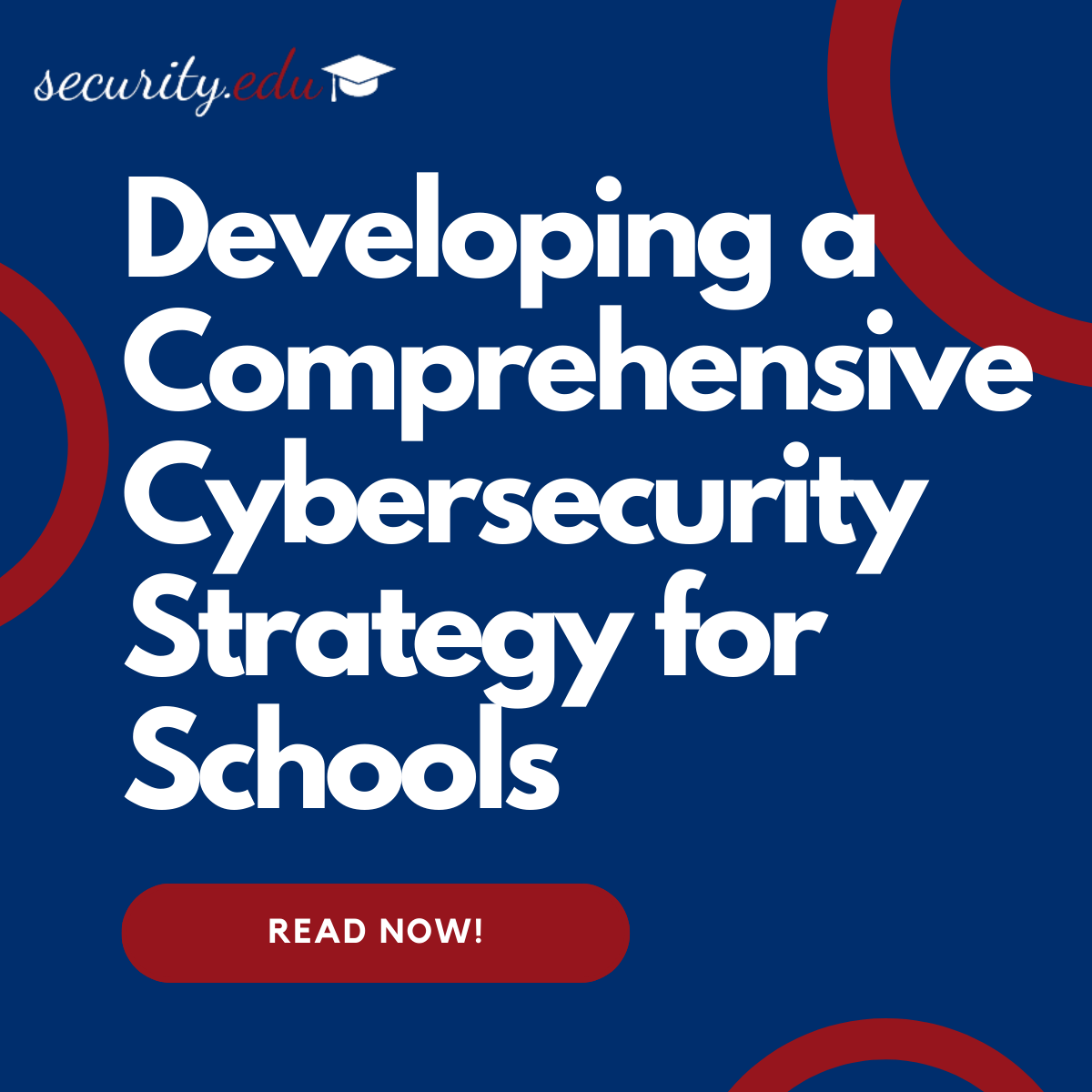In the tenth article of our series, we focus on guiding educational institutions through the process of developing and implementing a robust cybersecurity strategy. This strategy is not just a defense mechanism; it’s an essential framework that enables schools to proactively protect their digital ecosystems against cyber threats.
The Imperative for a Cybersecurity Strategy
The digital age has transformed education, offering new learning platforms, research capabilities, and communication methods. However, this digital expansion has also escalated the cybersecurity risks faced by educational institutions. Developing a comprehensive cybersecurity strategy is imperative for schools to protect themselves from these evolving threats.
Key Components of a Cybersecurity Strategy for Schools
- Risk Assessment: Begin by conducting a thorough risk assessment to identify potential cybersecurity threats and vulnerabilities within the institution’s digital infrastructure. This assessment should be comprehensive, covering all aspects of the school’s operations, including student data, research projects, financial information, and communication systems.
- Policies and Procedures: Based on the risk assessment, develop clear cybersecurity policies and procedures. These should outline acceptable use of technology, data protection guidelines, incident reporting mechanisms, and response protocols for potential breaches.
- Staff and Student Training: Cybersecurity awareness and training for staff and students are crucial. Regular training sessions can help in recognizing phishing attempts, securing personal devices, and understanding the importance of password management.
- Layered Security Measures: Implement layered security measures that include firewalls, anti-virus software, encryption, multi-factor authentication, and network segmentation. These layers of security create multiple obstacles for cybercriminals, reducing the risk of unauthorized access.
- Regular Updates and Patches: Ensure that all software and systems are regularly updated and patched. Cybercriminals often exploit known vulnerabilities in outdated software to gain unauthorized access.
- Incident Response Plan: Have a detailed incident response plan in place. This plan should outline the steps to be taken in the event of a cybersecurity breach, including how to contain the breach, assess the damage, communicate with stakeholders, and recover from the incident.
- Continuous Monitoring and Evaluation: Cybersecurity is not a one-time effort but a continuous process. Regularly monitor the school’s network for suspicious activity and evaluate the effectiveness of the cybersecurity strategy. This ongoing vigilance helps in identifying and mitigating threats before they can cause significant damage.
Conclusion: A Call to Action for Educational Institutions
The development and implementation of a comprehensive cybersecurity strategy are vital for protecting educational institutions in the digital age. By assessing risks, establishing clear policies, educating the school community, implementing robust security measures, and maintaining continuous vigilance, schools can significantly reduce their vulnerability to cyber threats.
As educational institutions continue to navigate the complexities of the digital landscape, it’s clear that investing in cybersecurity is not just about preventing losses; it’s about safeguarding the future of education itself.

